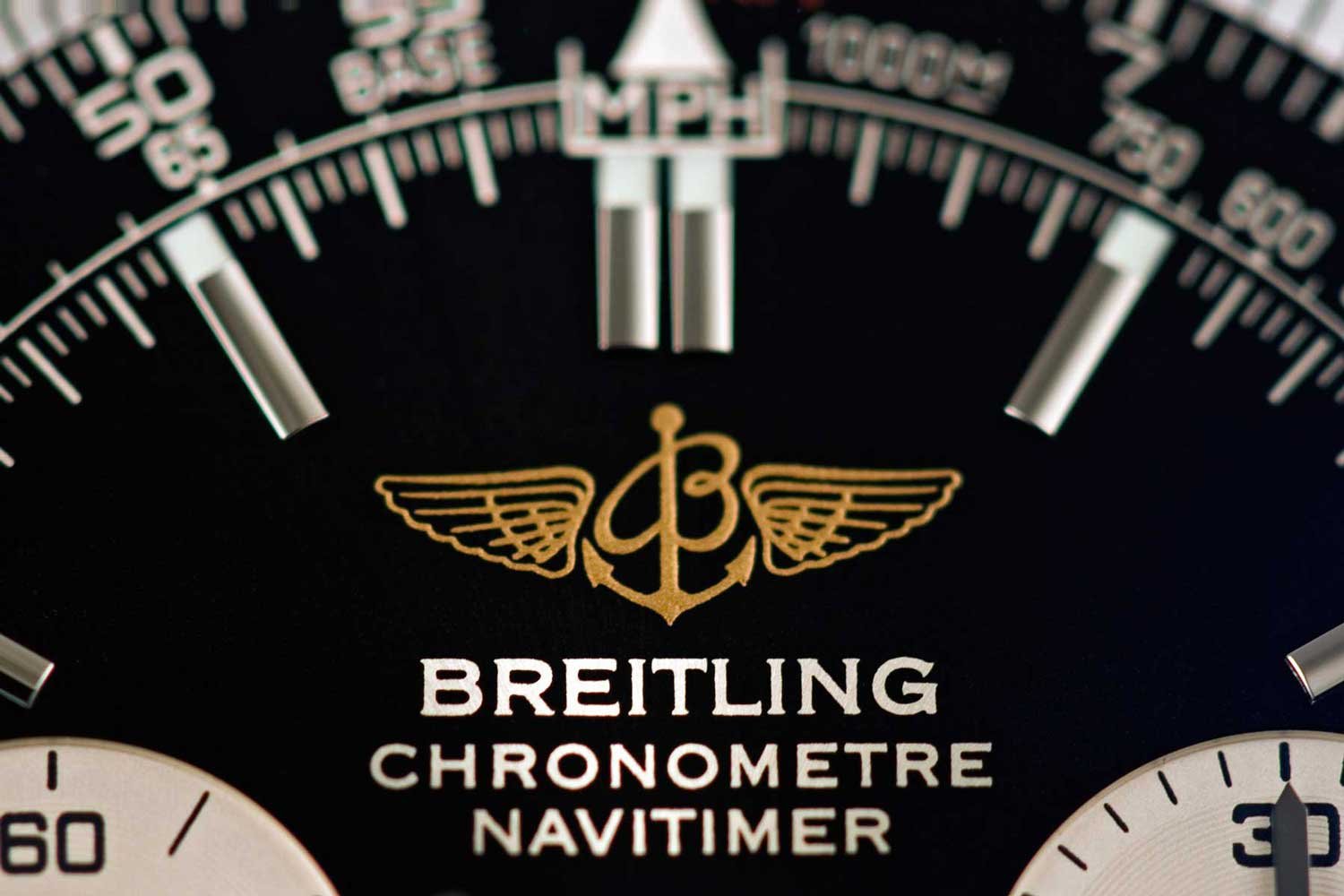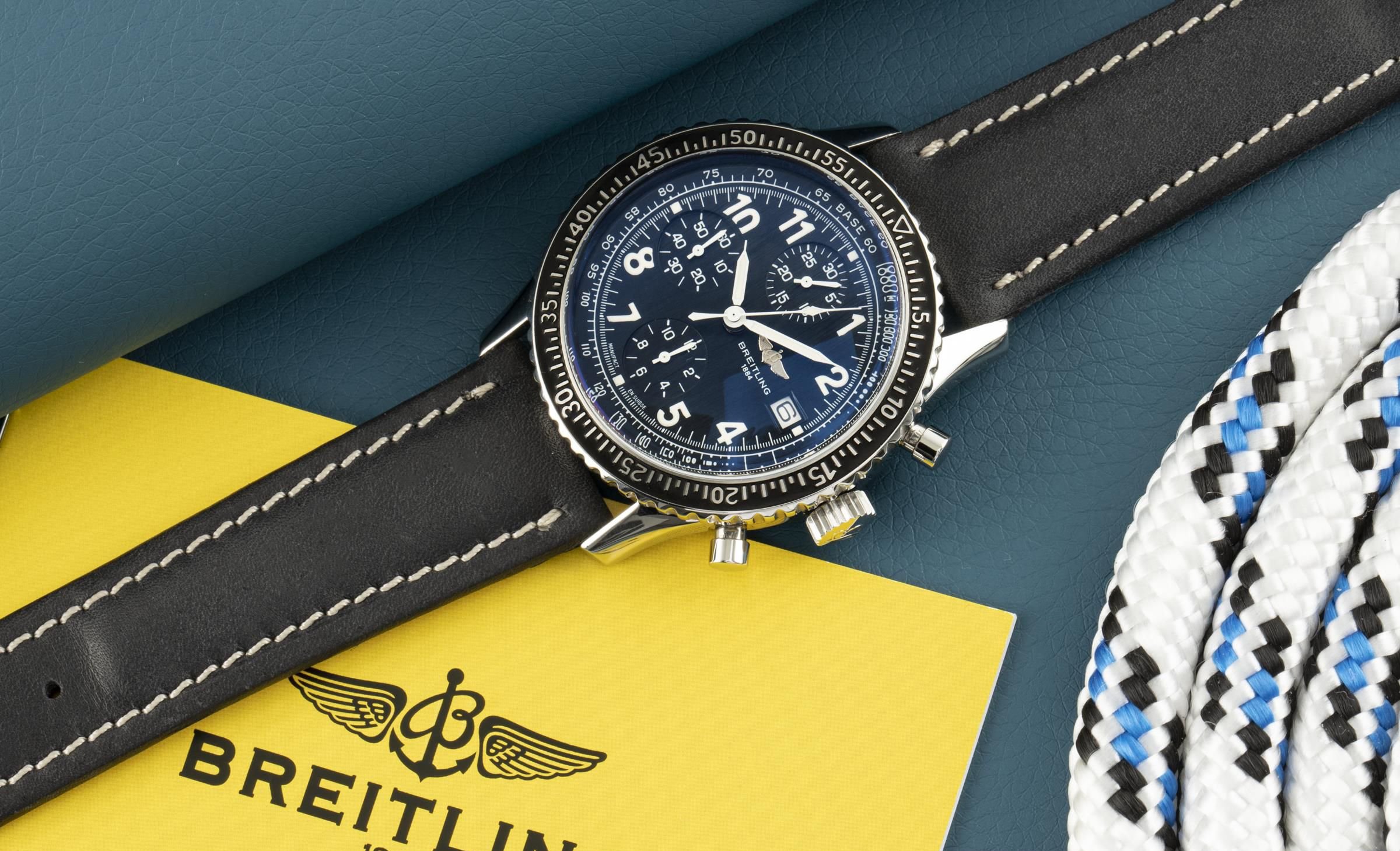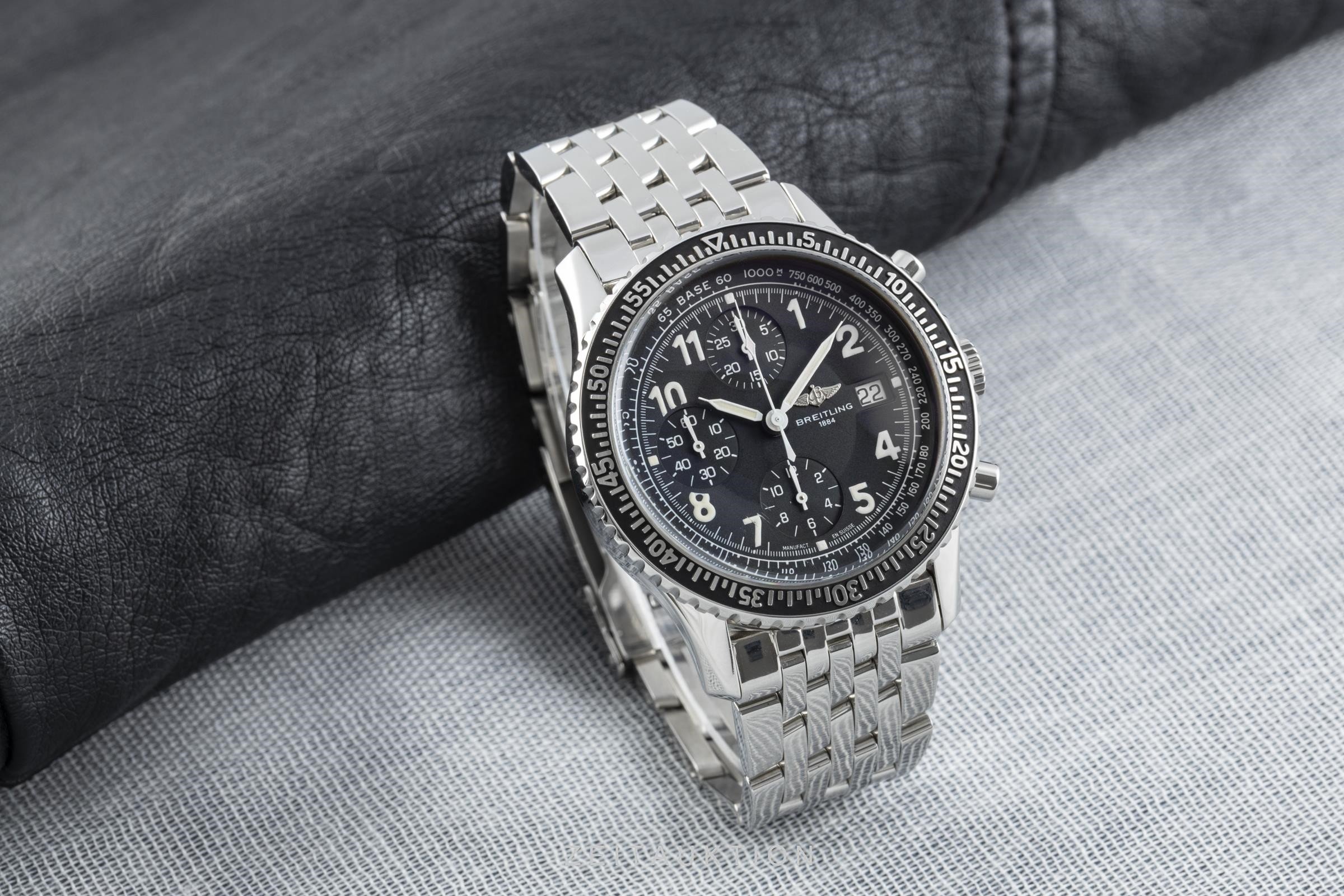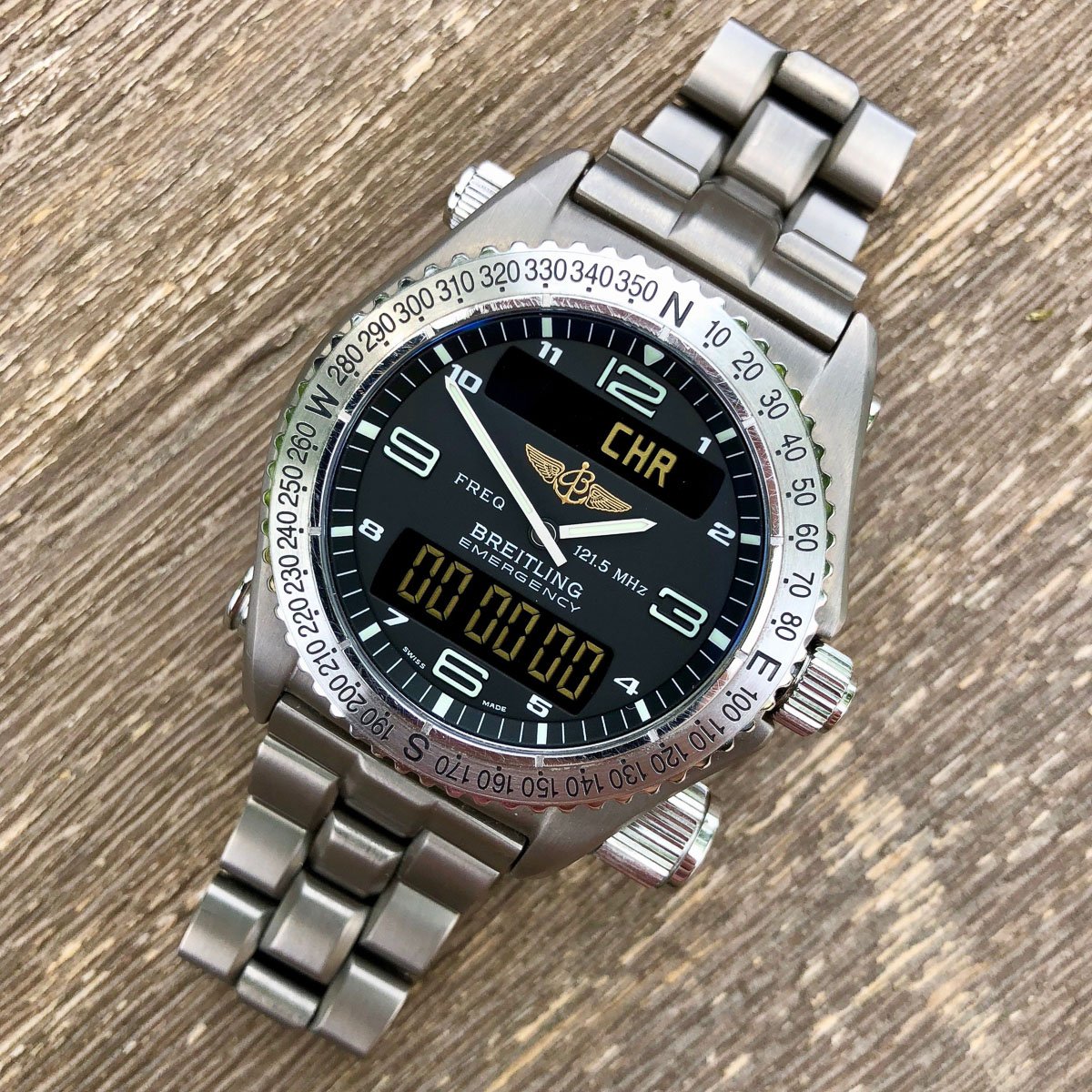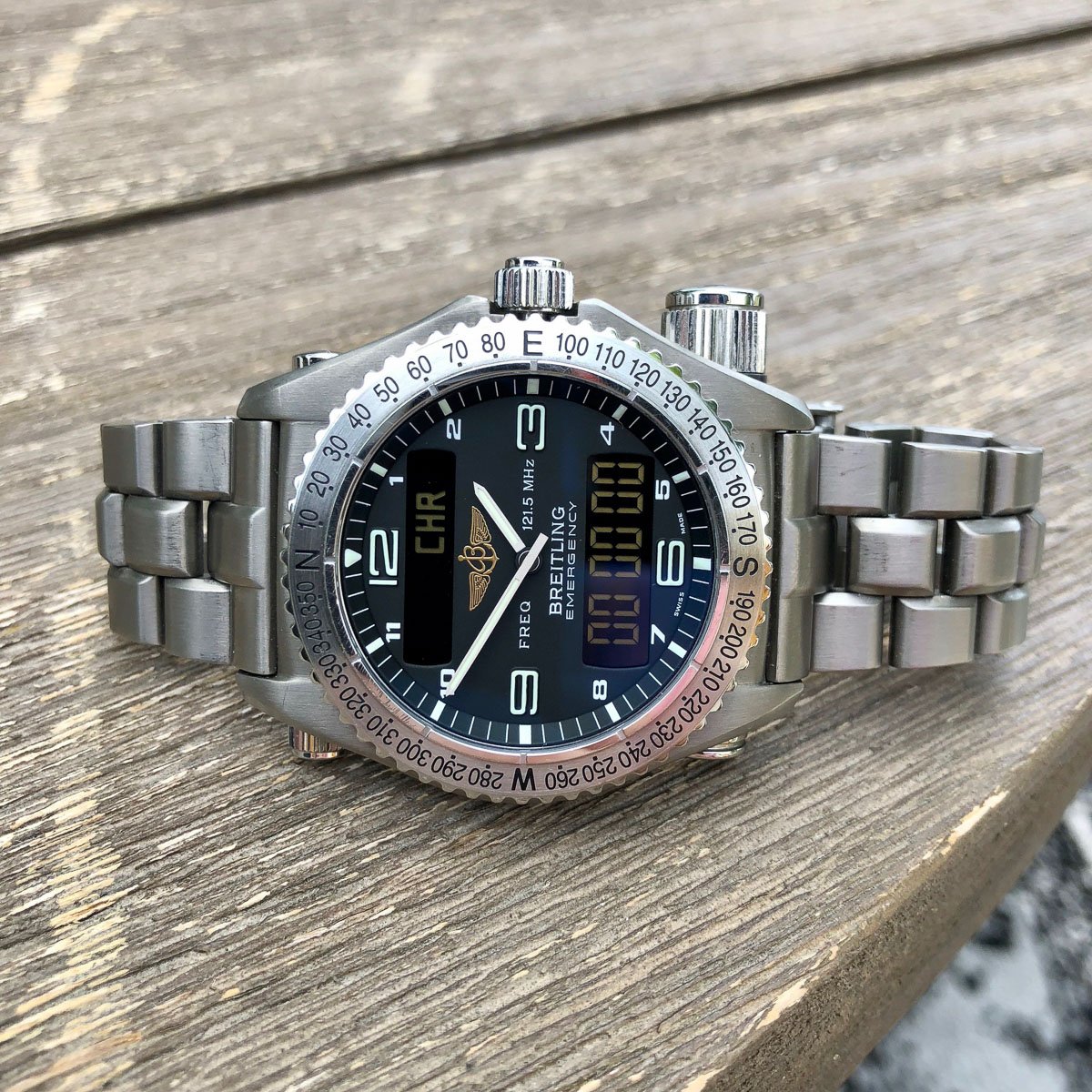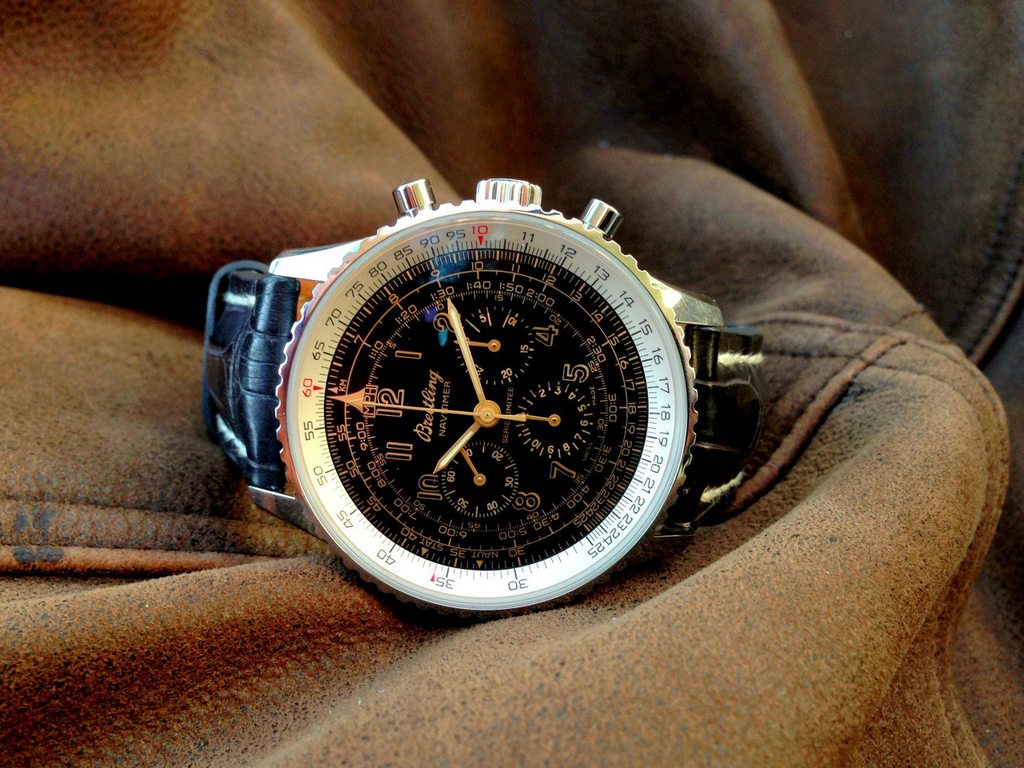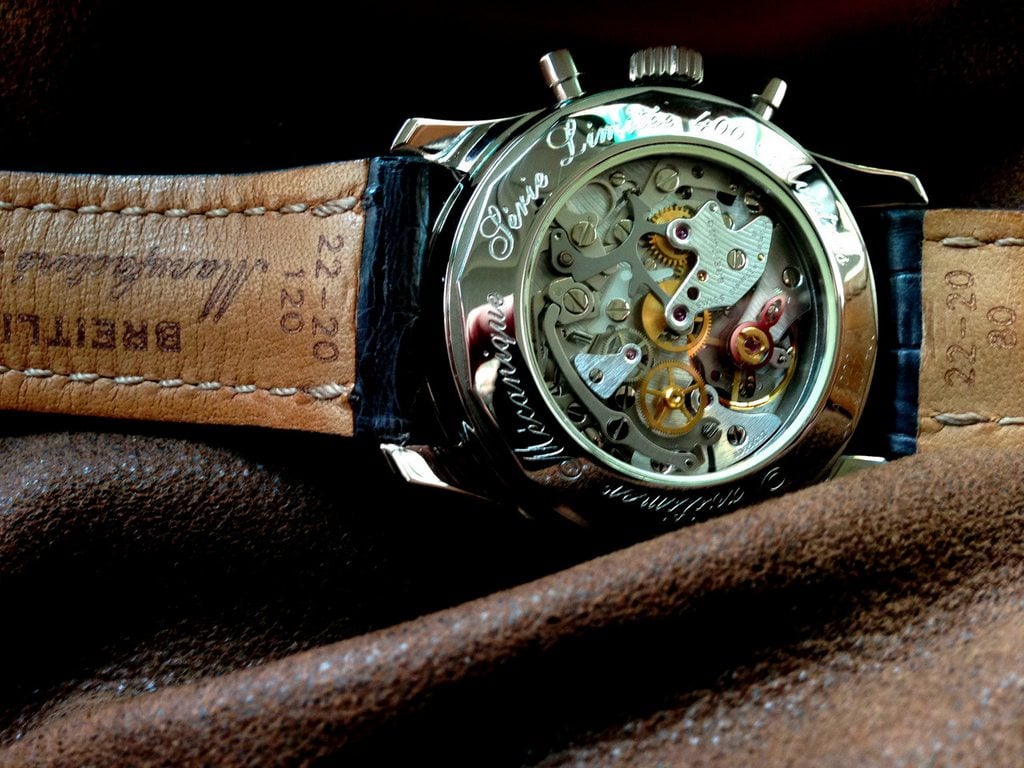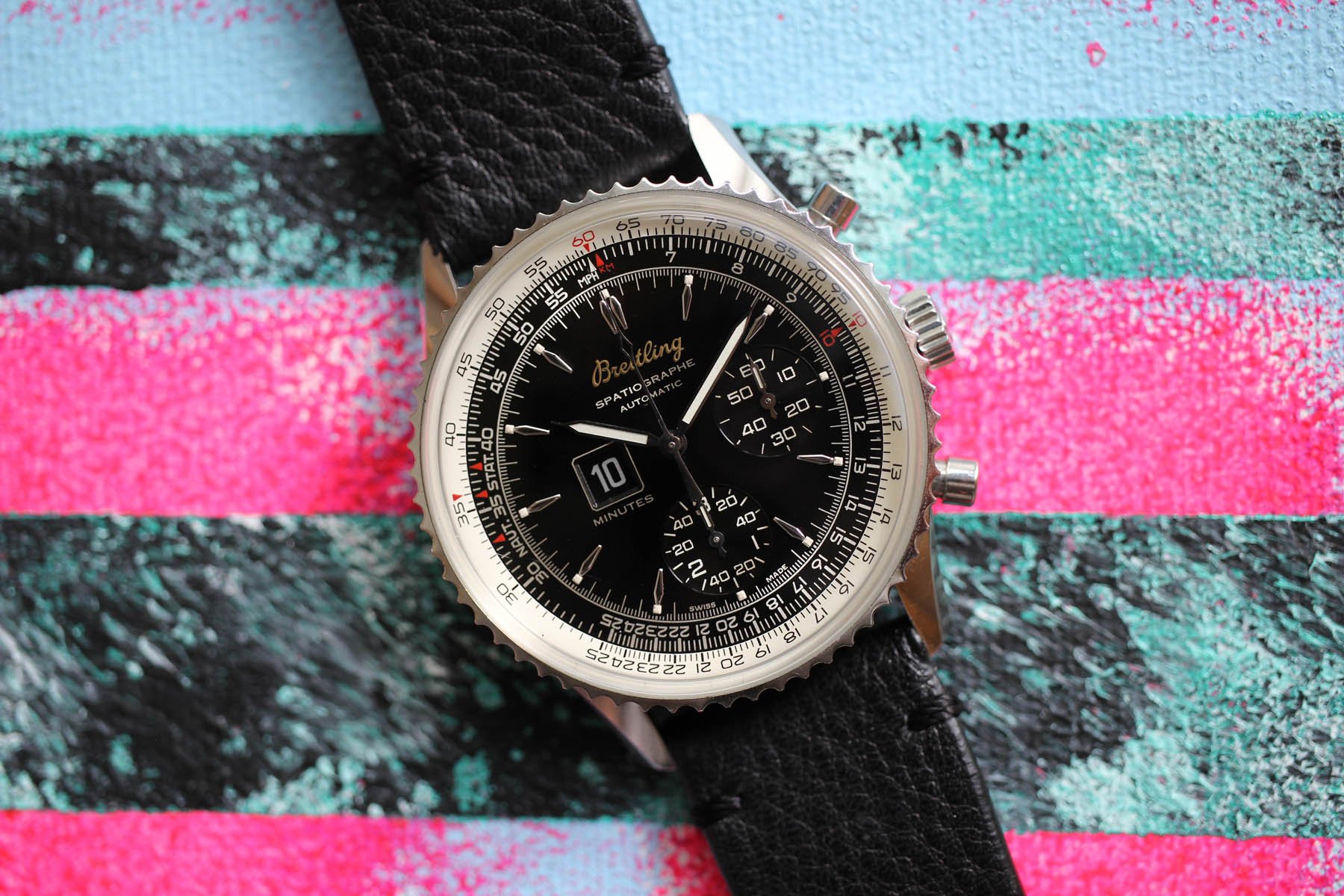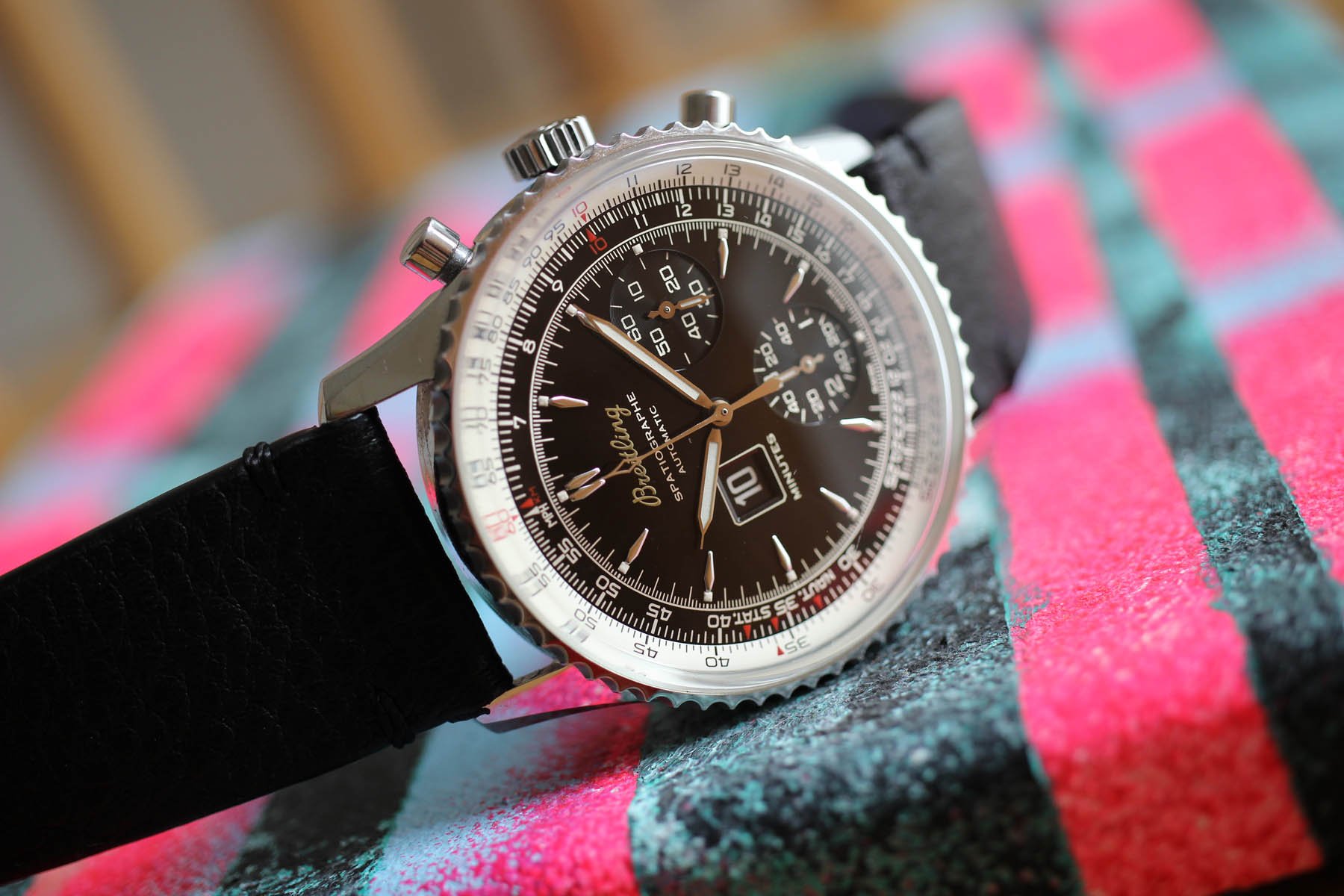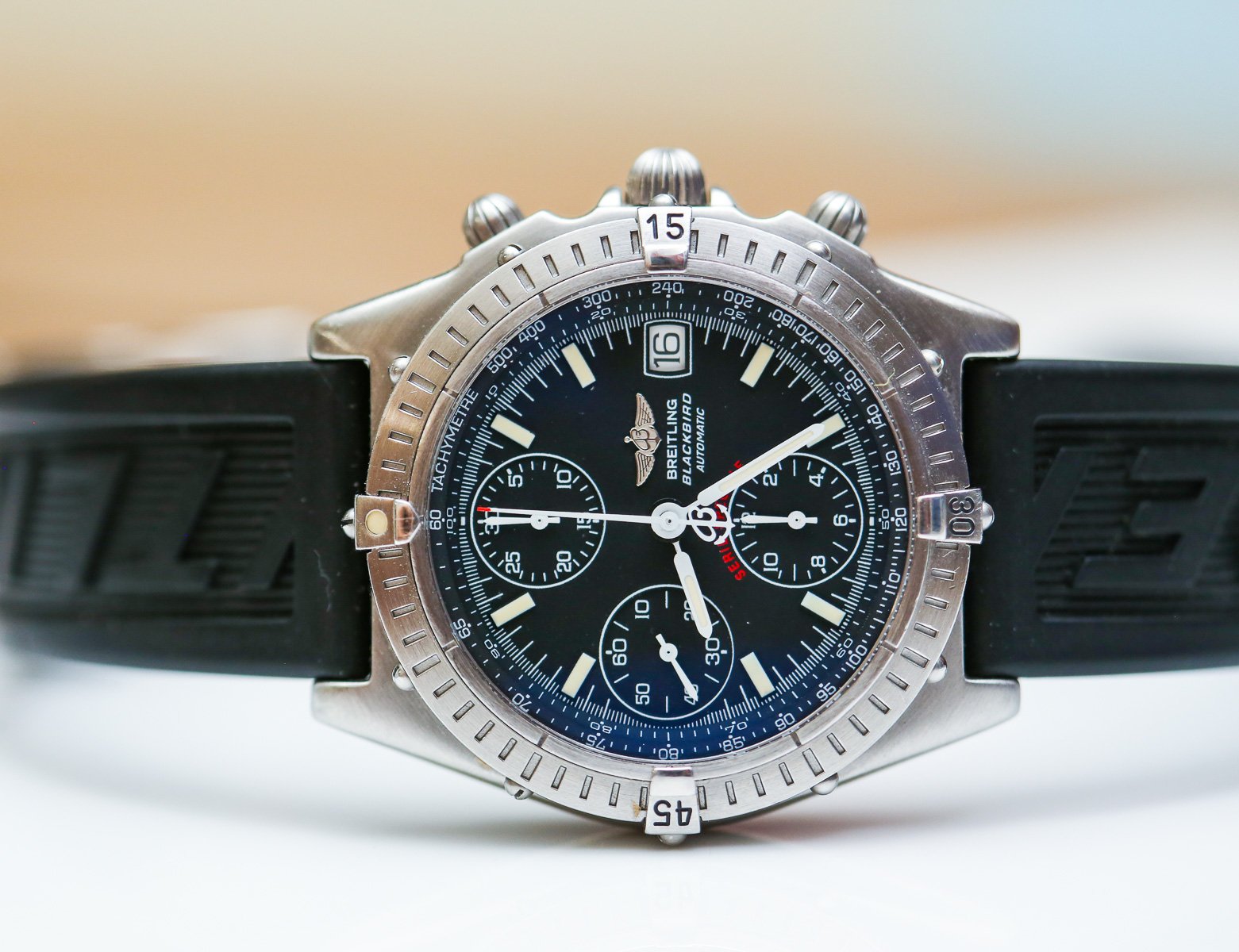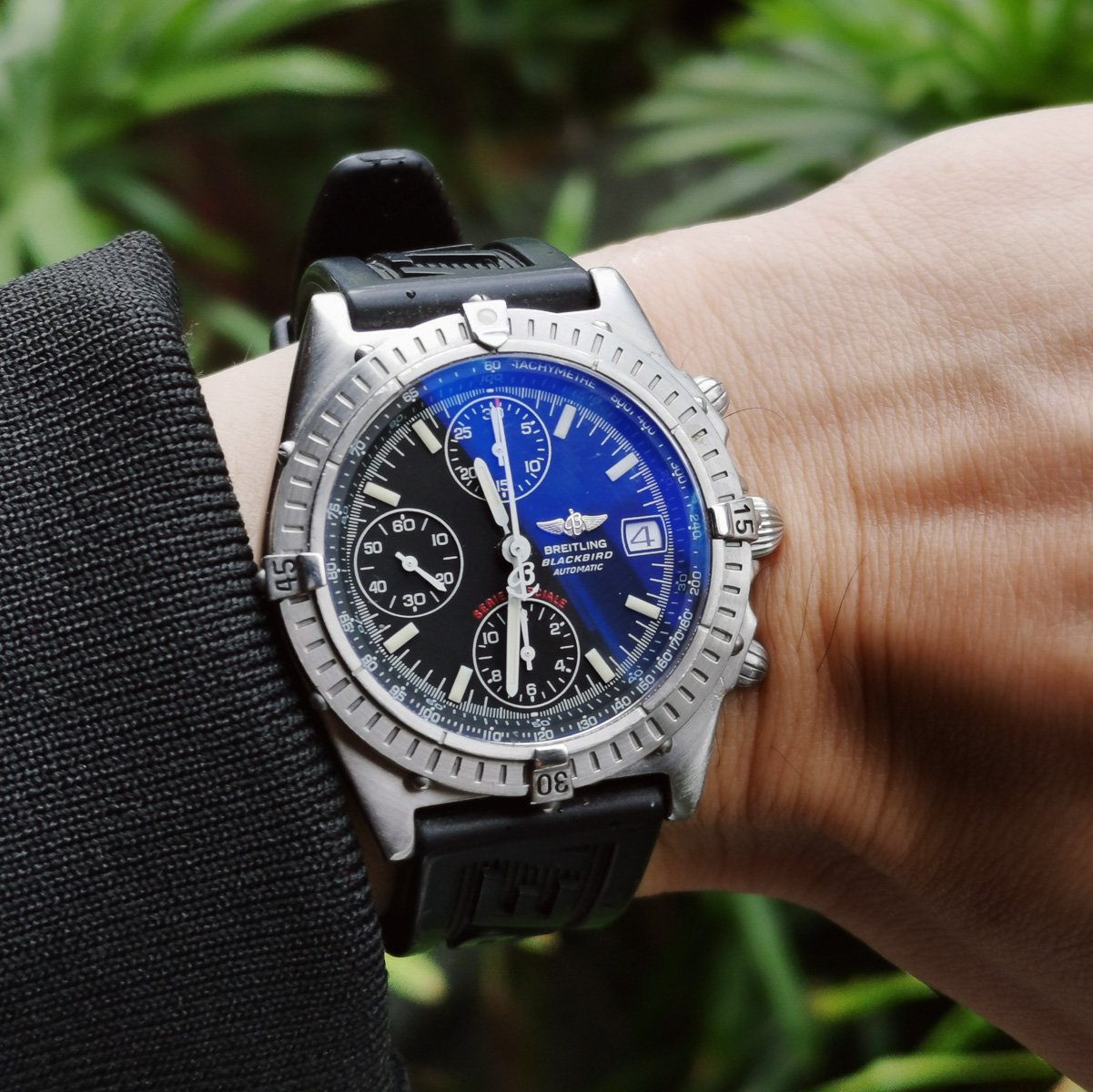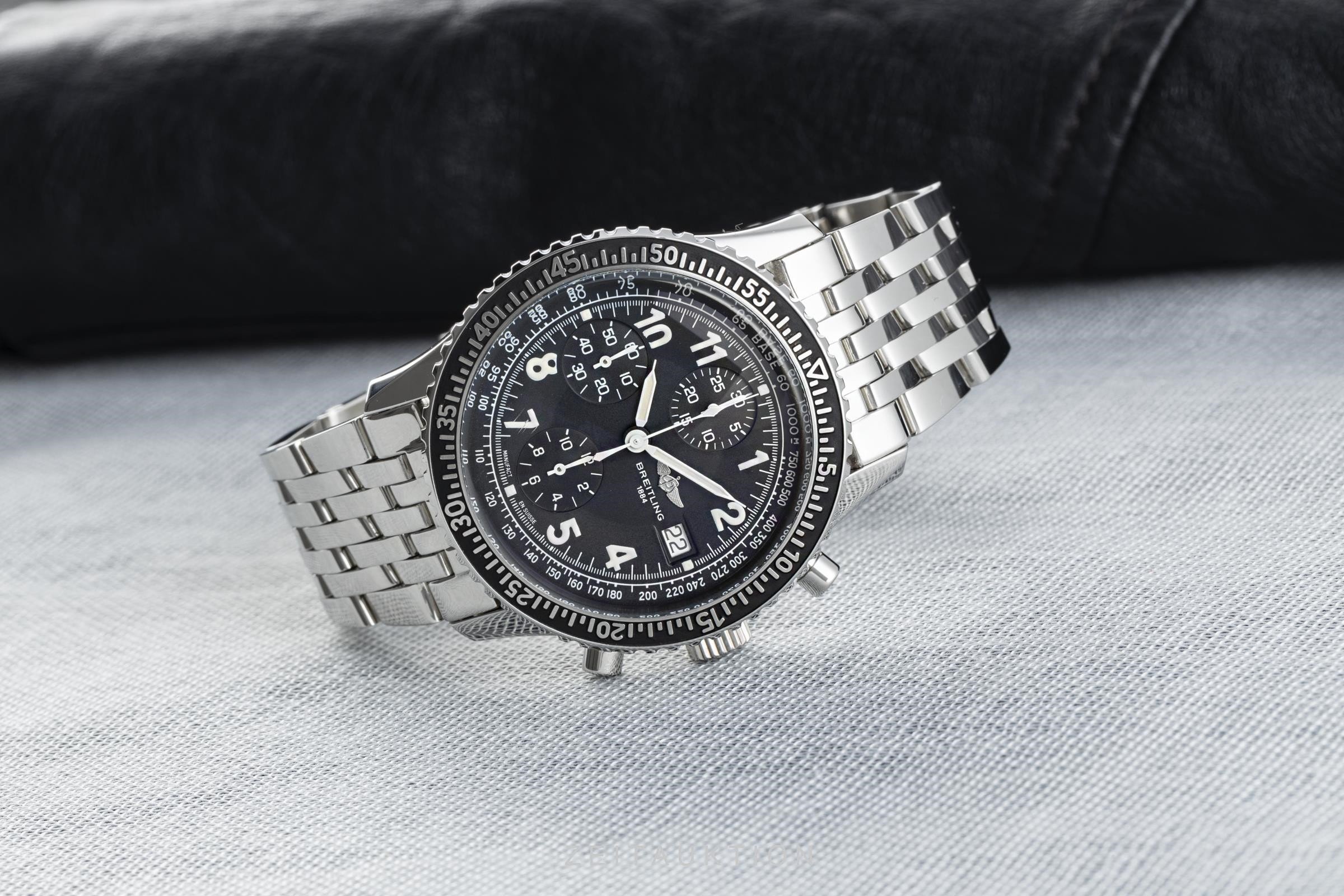Buying Guide: The Best Breitling Watches From The 1990s
We like to talk about vintage watches a lot within the Fratello team. Though most of what we write about is primarily focused on the most recent releases and developments, for many of us, a lot of the fun can be found in the sometimes weird and often wonderful world of vintage watches. It’s a world full of history, remarkable watches, incredible stories, and quirky details. It inspired us to come up with a series of articles focusing on the best watches per decade from a select group of brands. Some of them are priceless, some of them still affordable. In this installment, we will take a look at the best Breitling watches from the 1990s.
This week we will continue our journey through watch history to find the best watches from the 1990s. As I have discussed in the previous articles discussing the best watches from the 1980s, mechanical watches slowly started making a comeback in the eighties. By the time the 1990s began, quartz was still dominating the watch industry. But you could slowly see the two finding space next to each other.
With the gradual rise in the popularity of mechanical watches, we also saw a shift in perception. Mechanical watches became a luxury statement produced by prestigious brands with centuries of watchmaking history. It set it apart from the mass-produced, cheap and quartz watches. This luxury status was further backed up by a renewed interest in watches that featured classical complications. Combining the rich history in watchmaking and the technical masterpieces set mechanical watches apart from the fast world of quartz watches for good.
Breitling in the 1990s
With Ernest Schneider at the helm, Breitling moved to the forefront of the most important watch brands of the 1980s. This continued in the decade to follow. As I have discussed in the article about the best Breitling watches from the 1980s, Schneider focused on quartz watches at first. But once mechanical watches made a comeback, Breitling shifted the balance from focusing on quartz watches to focusing on mechanical watches. As the brand did not produce its movements, it turned to suppliers to buy movements for their watches. What you will see from Breitling in the 1980s and 1990s are a lot of models powered by ETA’s Valjoux 7750-series.
When it comes to the model ranges, the brand kept a strong focus on aviation-inspired tool watches. A lot of familiar names from the past were available in the 1990s. Some in their recognizable classic styles like the Navitimer and the Cosmonaute. But Schneider also introduced a new design aesthetic for the brand that was visible with the Aerospace, the reintroduced Chronomat, the Colt, and more models. In the 1990s, we saw updates for some of the models introduced in the 1980s, and on top of that, the brand also introduced some new models. But as we have come to know from Breitling, all the models have a strong functional tool watch character, despite the shift to becoming one of the leading luxury brands of the decade. Let’s take a look at five of the most remarkable of the decade.
The Entry Point — Breitling Navitimer Aviastar ref. A13024
The first watch on this list is somewhat odd when it comes to the typical Breitling aesthetic of the 1990s. This Aviastar’s great looks return to the great Breitling AVI chronographs from the 1950s and ’60s. When Ernest Schneider took over Breitling, he did not introduce a new version of the AVI/Co-Pilot models of the past. He perfectly understood the iconic value of the Navitimer and rather focused on that model as a link to the brand’s past. He kept the Navitimer alive and even introduced the typical Navitimer design trades to some of the other new models like the Jupiter Pilot I discussed in the best of the 1980s.
But in 1992, we finally saw a reintroduction of the AVI models. In that year, we saw the introduction of the AVI ref. 13023. It’s a step in returning to former glory. While I love its looks, it also suffers from a design flaw that many Breitlings in the 1990s suffer from, in my opinion. Because the brand used the Valjoux 7750, or a derivative of it for many of their watches, the dial layout was adjusted to fit the movement. As a result, I often find myself slightly turned off by the balance of the sub-dials. They seem to be either placed too far on the dial’s outskirts or are too small or a combination of both. The follow-up to the AVI ref. 13023 didn’t have that problem, though.
Multiple colors available
The Breitling Navitimer Aviastar ref. A13024 was introduced in 1996 and stayed in production for only two years before being discontinued in 1998. As you can see, the Aviastar sports a great 1960s inspired chronograph design. The watch features a 41.5mm stainless steel case that is pretty thick at 16.4mm. The watch was first introduced with a black dial and black unidirectional bezel and came with the choice of a leather strap or a five-link Pilot’s bracelet. Breitling replaced it with the Navitimer bracelet not long after the introduction, and the brand also introduced versions with a brown dial and bezel or a blue dial and bezel.
Inside the case, Breitling used their Breitling Calibre 13, which is based on the trusted Valjoux 7750. As mentioned, many of the Breitling releases of that time were powered by Valjoux movements. How Breitling avoided the quirk of the sub-dials is simple. Because the dial of the Aviastar has a lot more going on, the sub-dials take a backseat in relation to the Arabic numerals and the outer scale. It’s why this is perfectly balanced. Breitling collectors love the Aviastar models, and prices for one have increased over time. The black model is the easiest to find. While the blue and brown colors are harder to find, all models go for roughly €3K–€4K. This would have been my pick easily if it wasn’t for my actual quirky preferences.
My pick — Breitling Emergency ref. E56321
My pick for this list is the famous Breitling Emergency ref. 56321. Fratello’s own Gerard owns a very special limited edition Emergency created for the Royal Air Force Police. It completely changed my opinion about the watch. If there are two Breitling watches I have completely changed my opinion about, it’s both the Aerospace and the Emergency. Both are somewhat similar in their appearance, which I wasn’t necessarily a fan of. The combination of analog and digital is not something I am a big fan of. But for both, it serves a practical purpose, and as soon as you put the Emergency on your wrist, it makes sense. Ever since that moment, the first generation Breitling Emergency ref. 56321 has become one of those quirky personal favorites.
The Emergency was introduced in 1995 for use by pilots and passengers and has become iconic amongst watch enthusiasts. The quartz-powered watch can serve as a location beacon for search and rescue units if you need to be rescued. If necessary, the watch can transmit a signal on the international distress frequency of 121.5 MHz. The transmission can be picked up some 167 kilometers (103 miles) away by emergency services. To achieve this, the watch has three distinct features: a miniature transmitter, an antenna system, powered by a separate battery to make sure the signal can be sent for 24 hours straight.
Smaller and, therefore, better
The story goes that Breitling sold 40,000 first-generation Emergency models, but in 2009, the watch was discontinued because the 121.5 MHz frequency was increasingly hindered by false alarms. It led to the introduction of the much larger Emergency II. But the first generation Emergency ref. 56121 features a 43mm titanium case and a full titanium bracelet. It came with a blue, yellow, or black dial powered by the Breitling quartz Caliber 56. After Breitling changed the dial somewhat with the first saying MH(Z) and later changed this to MH(z), this became ref. 56121.1. When Breitling chose to make the movement COSC-certified, the reference changed to ref. 56321.
Breitling produced quite a few special editions for different organizations. These limited edition specials tend to go for a big premium over the regular models. Depending on which of the references you are after, the price differs. The 56121 references you can pick up between roughly €3K–€4K and the ref. 56321 is slightly more expensive at €3.5K–€4.5K. If you have your eyes set on getting one of the limited editions specifically made for an air force, expect to pay a lot more, sometimes up to double that regular model prices. Whichever one will be your pick, the Breitling Emergency is an iconic part of watch history and a quirky watch I have grown to love.
Money is no object #1 — Breitling Old Navitimer Mécanique ref. A11022.1
A series of models that are well known with Breitling collectors are the Breitling Display Back models. In the mid to late nineties, Breitling produced a series of watches with beautiful manual winding Lemania movements visible through a display case back. I want to focus on two models specifically made for the Japanese market. In 1995 the brand released the Old Navitimer Mécanique A11022 Japan LE produced in a limited edition of 250 pieces. All the watches were individually numbered and featured the famous Navitimer reverse panda dial. While this is a release certainly worth checking out, there was another release that followed three years later that I think looks even better.
In 1998 Breitling released the Old Navitimer Mécanique A11022.1 LE in two different versions. The first is a limited edition of 200 pieces with a white dial. It’s a very clean version of the famous Navitimer. The second is a black dial version that pays homage to the first Navitimer ref. 806 “all black” model from 1954. It was produced in a limited edition run of 400 pieces. Both these models have become legendary amongst Breitling collectors because they are hard to come by. But most of all, because they step away from the Valjoux 7750-powered Navitimers of the 1990s.
A very rare bird
The Old Navitimer Mécanique A11022.1 LE features a 41.5mm stainless steel case. As you can see, the black dial features gold/orange printing which gives the watch a very classy feel. Despite its beautiful aesthetic, the special feature was that the watches came equipped with a movement based on the legendary Lemania 1873. The manual-winding Calibre 1873 is also used for Omega’s legendary Caliber 861. It operates at 21,600vph, has 17 or 18 jewels, and has a 40-hour power reserve. As you can see in the picture, it adds to the attractiveness of the release. It’s a beautiful homage to the first Navitimer, and that’s why it has legendary status amongst collectors.
As you would expect, these Old Navitimer Mécanique A11022.1 LE models are very hard to find. With production numbers of 200 and 400 respectively, they only show up for sale very rarely. Expect to pay between €4K–€5.5K for one if they show up for sale. Currently, there is one for sale on Chrono24 that is priced a little over €5K. Considering its rarity, the special movement, and the beautiful homage colors, that does not seem like a lot of money. Especially considering what some of the other rare limited editions from other brands usually tend to go for. What you get in return with the Old Navitimer Mécanique A11022.1 LE is one of the best Breitling releases of the 1990s.
Money is no object #2 — Breitling Montbrillant Spatiographe ref. A36030
The Breitling Montbrillant Spatiographe ref. A36030, at first glance, looks like a normal Navitimer. But look again, and you will see that it is quite different. The Spatiographe is part of Breitling’s Montbrillant series of the Navitimer introduced in the early 1990s. The series was named after the Rue Mont Brilliant, a street in the watchmaker town of La Chaux-de-Fonds, where Léon Breitling opened his watch factory in 1892 after relocating from Saint-Imier. The Montbrillant Navitimer series started as a smaller 38mm series, but over time, Breitling added models in different sizes, with different functions and movements. One of them is the oddball Spatiographe that was part of the collection from 1997 until 2002.
Fratello’s own Tomas owns a Spatiograph and wrote a lengthy article about it. The article explains that even the most renowned Breitling collectors and experts have no idea of the real motivation, inspiration, or reasoning behind the Spatiographe when it was first developed. As you can see in the pictures, the Spatiographe does not feature the regular minute sub-dial. Instead, Breitling added a large window at 9 o’clock where you can see a slowly rotating minute disc that shows up to 10 minutes. If you look at the sub-dial placed at 6 o’clock, you will find there is no regular 12 hours counter. Instead, there is a three-hour counter that is divided into 10-minute intervals. It’s quite a break from the regular chronograph, but what a glorious one.
As close to in-house as it gets
In his article, Tomas goes a bit deeper into the possible reason why Breitling created this oddball Spatiographe. A fair assumption is that it referred back to the AVI ref. 765 that featured a 15-minute counter at the 3 o’clock position. It is believed to be used as a 15-minute countdown for pilots to have known when the plane engine was warm and they could take off. But if it is an homage, why a 10-minute counter and sub-dial that could keep track of only three hours? It remains a question even to this day.
Inside the 41.5mm case, Breitling used the specially developed Cal 36 automatic movement for this watch. Essentially it is a Dubois-Depraz chronograph module that’s integrated with the ETA2892-A2. At the time, it was as close as Breitling would come to an in-house movement. The brand introduced multiple dial versions of the Spatiographe, and it also came with the choice of a steel or gold case. The steel version would be the way to go for me. When it comes to the different dials, the one Tomas owns is the most straightforward and best option that came in white and black. There are also versions with italic Roman numerals for the hours that look pretty horrible. Prices for a Breitling Montbrillant Spatiographe are around €4K. That will buy you a wonderfully weird Breitling timepiece.
Money is no object #3 — Breitling Chronomat Blackbird ref. A13050.1
The last watch on this week’s list is a Breitling Chronomat. How could it not be? The Chronomat was the watch that returned Breitling to the spotlight of the Swiss watch industry. For this list, I picked a special Chronomat. In 1995 Breitling introduced the Chronomat Blackbird ref. 13550. This stealthy version of the Chronomat is inspired by the Lockheed SR-71 spy plane, developed in secret during the cold war. The plane was nicknamed the “Blackbird” because the body was made from black-coated titanium. The plane was first introduced in 1964 and stayed in service until 1999. To this day, it is the fastest jet plane known to man, reaching speeds up to Mach 3.3.
This extraordinary plane inspired Breitling to come up with a Chronomat that features a black dial and black sub-dials. As you can see, there are hints of red in the form of the tip of the central chronograph seconds hand and the “Serie Speciale” wording above the 6 o’clock subdial. Additionally, the dial features the Blackbird name under the brand name at 3 o’clock. And to top it off, Breitling decided to apply a fully brushed finish instead of a polished finish for some of the parts. Overall, it creates a less in-your-face version of the Chronomat. Breitling also produced a limited run of the same watch with a blue dial, appropriately nicknamed the “Bluebird.”
Quite affordable
Inside the 39.8mm stainless steel case, Breitling used their automatic Caliber 13 like for all their regular Chronomat models. It is based on the ETA 7750 movement. In 1999 Breitling updated the Chronomat with COSC-certified versions of the movement. When the brand updated the case back with an engraving of the COSC-certification and the model’s serial number was also stamped in the case back. It’s also when the reference changed to ref. A13350. While visually nothing changed except for the case back, the COSC-certification might be a reason to consider the updated version.
The strange thing is that Breitling never gave the Chronomat Blackbird its own reference number. That only happened with the introduction of the newer model in 2002. So the Blackbird is part of the regular Chronomat models if you are on the lookout for one. Both Blackbird references from the 1990s go for roughly €2.5K–€4K depending on the condition and the COSC-certified ref. A13350 is obviously going for a bit more. For me, this is one of the coolest Chronomat models out there from the 1990s. If you know me a bit, those are weird words for me to say. As I explained in previous articles, the Chronomat was synonymous with everything that was wrong with luxury watches for a long time. As so often, dive a little deeper, and you’ll find a good story like this one.
Final Thoughts
Five Breitling models are obviously not enough. I could have added the Colt, the Old Navitimer models, the Montbrillant models, the Callisto, the B01, the Superocean, and the list goes on. As I only have five picks, it’s undoable to cover them all, unfortunately. When it comes to vintage Breitling, the key is to get to know the history of the different models. You will find a lot of similar executions of the same watch. The most common differences are dial layout and in the logo that is used. On top of that, you have to remember that many vintage pieces were serviced over the decades, and parts have been replaced. And lastly, you have to be aware of many fake/Franken pieces out there.
A lot of this crucial historical information has been well documented and made available by collectors and makes for some rather interesting reading. Breitling The Book by Hervé Genoud is a great source of information, as is Benno Richter’s Breitling The History of a Great Brand of Watches 1884 to the Present. On top of that, contacting vintage experts can also help out greatly. You will find a lot of info on breitlingsource.com, and you can visit the Timezone forum for Breitling here. On both, you will find a great number of knowledgeable Breitling collectors that would be happy to help you out.
In next week’s installment of Buying Guide, we’ll be looking at some of the best Casio watches from the 1990s. In the meantime, did I miss anything out? Did I not include your favorite Breitling from that era? Let us know what your favorite Breitling from the 1990s is in the comments section below!

